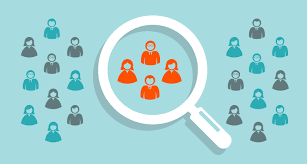In today’s hyper-competitive digital world, knowing your audience isn’t a luxury—it’s the bedrock of business survival. According to a report by Statista, global digital ad spending will reach over $870 billion by 2026. That staggering number reveals more than just an increase in ad budgets. It tells us that brands are investing heavily in knowing where, how, and to whom to market. This is where market research and audience segmentation step in, transforming data into decisions that drive growth.
If you’re launching a new product, planning a campaign, or optimizing your customer journey, understanding your audience should be your first step—not your last-minute fix. Let’s dive deep into what makes market research and audience segmentation essential tools for today’s digital marketer.
Why Market Research Is the Compass of Modern Marketing
Every great marketing strategy starts with a question: Who is my customer?
Market research is the systematic process of gathering, analyzing, and interpreting information about your target market. It includes everything from understanding customer preferences and purchasing behavior to evaluating competitors and forecasting trends.
When done right, market research gives brands a crystal-clear picture of where opportunities lie and where to avoid potential pitfalls. It helps you determine product-market fit, identify emerging trends, price products effectively, and refine your messaging to speak directly to your ideal audience. Without it, companies are essentially sailing blind in turbulent waters.
The most effective businesses in 2025 are those that are insight-driven. They don’t assume what customers want—they know, because they’ve invested in understanding them.
The Role of Audience Segmentation in Personalization
While market research tells you who your customers are in a broad sense, audience segmentation takes it a step further. It divides your overall market into smaller, more specific groups based on demographics, psychographics, behavior, and more.
Imagine you’re selling fitness equipment. Market research might reveal that your general audience is health-conscious adults aged 25–45. But audience segmentation might show that within this group are busy professionals who prefer quick workouts, parents seeking family-friendly routines, and fitness enthusiasts looking for high-performance gear. Each group has distinct needs, challenges, and motivations—and treating them all the same would be a costly mistake.
Segmented audiences allow marketers to tailor content, campaigns, and communication styles in a way that resonates deeply. That’s not just good marketing; it’s smart business. In fact, research by HubSpot shows that personalized emails based on segmented lists generate 760% more revenue than generic campaigns.
Step 1: Define Clear Business Goals First
Before diving into surveys, analytics, and customer personas, take a step back. What are you trying to achieve with this data? Whether it’s increasing sales, launching a new product, or improving customer retention, your research should align with a specific business objective. This will guide not just the type of data you collect but also how you interpret and act on it.
Step 2: Choose the Right Type of Market Research
There are two main types of market research—primary and secondary. Primary research involves gathering new data directly from sources via surveys, interviews, and focus groups. It’s more time-consuming but offers precise insights tailored to your unique business questions.
Secondary research, on the other hand, relies on existing data from public records, academic studies, industry reports, or competitor analysis. It’s quicker and often more cost-effective, but it might not address your specific goals as directly.
Depending on your needs, you may need a mix of both to form a comprehensive view.
Step 3: Create Detailed Customer Personas
Once you’ve gathered your data, use it to create customer personas—fictional profiles representing your ideal customers. These should go beyond surface-level demographics. Include values, lifestyle choices, buying triggers, digital behavior, and even emotional pain points.
The more detailed your personas are, the easier it becomes to craft marketing messages that genuinely connect. These profiles help content creators, sales teams, and advertisers visualize who they’re speaking to, which improves message consistency and relevance across platforms.
Step 4: Segment Your Audience Based on Real Data
Audience segmentation isn’t a guessing game—it’s a data-driven strategy. Begin by analyzing your customer database or website analytics. Look for patterns in how different users behave, what they purchase, when they interact, and how they engage with your brand.
Common segmentation criteria include geographic location, age, income, gender, purchase history, browsing behavior, and even device usage. Behavioral segmentation is particularly powerful in a digital-first world because it reflects how users are actively engaging with your brand in real-time.
The best segmentation strategies are dynamic, allowing businesses to adapt based on evolving customer behaviors and market conditions.
Step 5: Use the Right Tools and Platforms
Technology has made market research and segmentation more accessible than ever. Tools like Google Analytics, Hotjar, SEMrush, and HubSpot allow you to gather real-time data on user behavior. Social listening platforms like Brandwatch or Sprout Social can help uncover sentiment trends and emerging interests.
CRM platforms enable businesses to segment their customer base based on purchase history, email engagement, or support tickets. Marketing automation tools can then use these segments to trigger personalized campaigns.
The key is integration. When your research tools talk to your sales and marketing systems, you build a streamlined, insight-driven ecosystem.
Step 6: Test, Measure, and Refine Continuously
Great marketers never assume they’ve “nailed it.” They test. A/B testing different versions of ads or landing pages across segments can reveal what really drives conversions. The insights from one campaign feed into the next, creating a cycle of continuous improvement.
Segmentation is not static. As your market evolves, so should your understanding of it. New behaviors, platforms, and expectations emerge all the time. Keeping a pulse on your audience ensures your strategies remain relevant and effective.
Step 7: Align Your Content Strategy with Segments
Content is the voice of your brand. Aligning your content strategy with your audience segments ensures that you’re speaking directly to the right people in a tone and format they respond to.
For instance, a tech-savvy Gen Z segment might prefer short-form video content on TikTok or Instagram, while business professionals might engage more with detailed LinkedIn articles or podcasts. Your messaging, tone, visuals, and calls-to-action should be adapted accordingly.
This is also where personalization pays off. Imagine landing on a website that recognizes your industry, addresses your needs, and suggests exactly what you’re looking for. It feels like magic—but it’s just good segmentation in action.
The Link Between Market Research and Digital Education
In the age of digital learning, even education providers are leveraging segmentation. For example, an Online Digital Marketing Course might appeal to very different audiences: aspiring freelancers, in-house marketers, or business owners trying to build their brand. Segmenting these groups allows course providers to craft tailored messaging, pricing strategies, and content formats that speak directly to each learner’s needs.
For marketers and entrepreneurs alike, learning how to conduct effective research and segmentation is a skill that pays off across every industry and channel.
Conclusion: The Future Is Data-Informed and Human-Centric
Market research and audience segmentation are not just trends; they are foundational practices that help brands cut through the noise and connect with customers meaningfully. As AI tools and data analytics become more advanced, the opportunities to fine-tune your strategies will only grow.
But here’s the catch—technology alone isn’t enough. The brands that will dominate the next decade are those that blend data-driven insights with deep human empathy. Understanding your audience doesn’t stop at knowing their age or favorite app. It means tapping into their motivations, frustrations, and dreams.
If you want your marketing efforts to succeed, start not with your product, but with your people. That’s where the magic happens.



